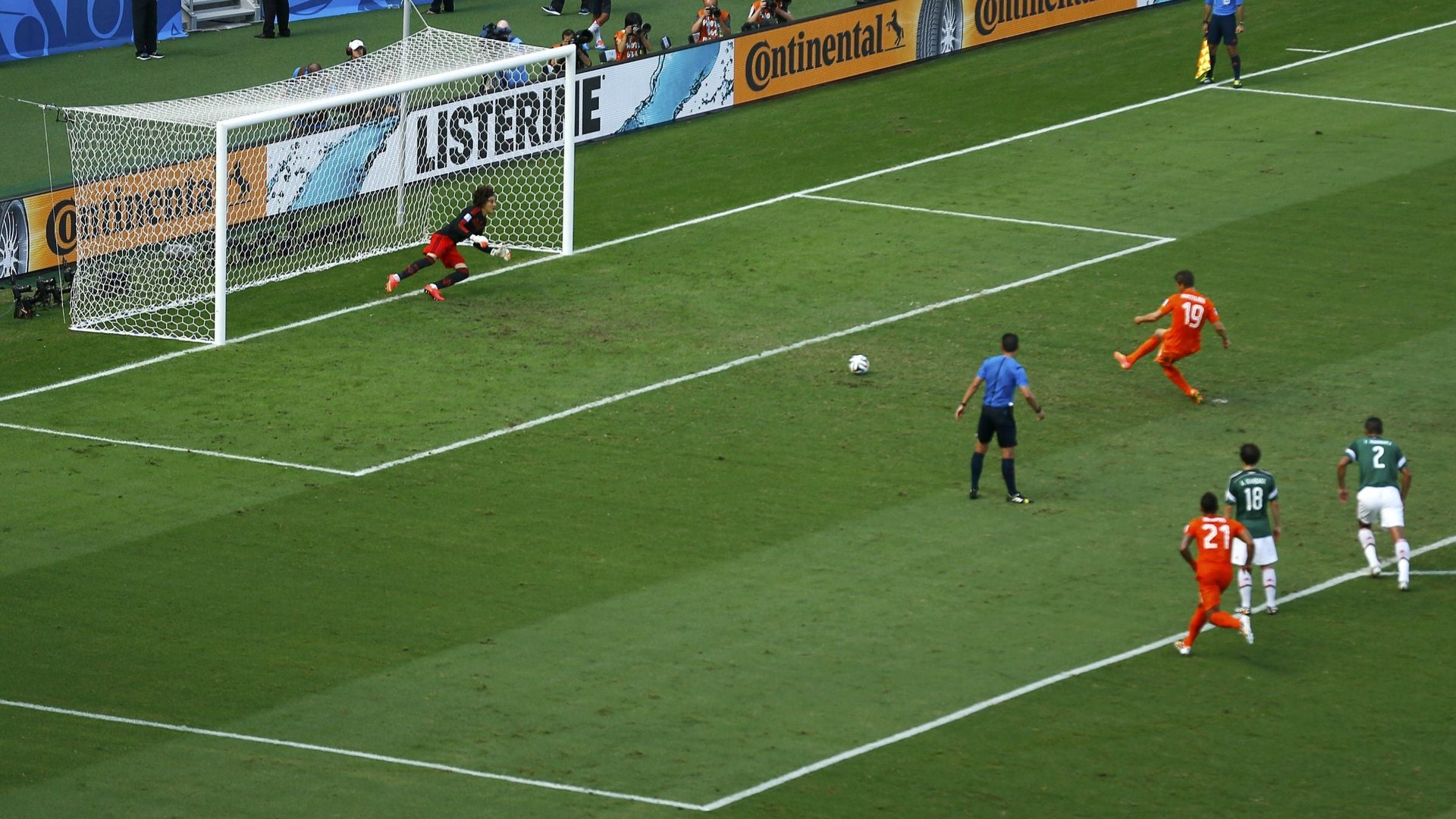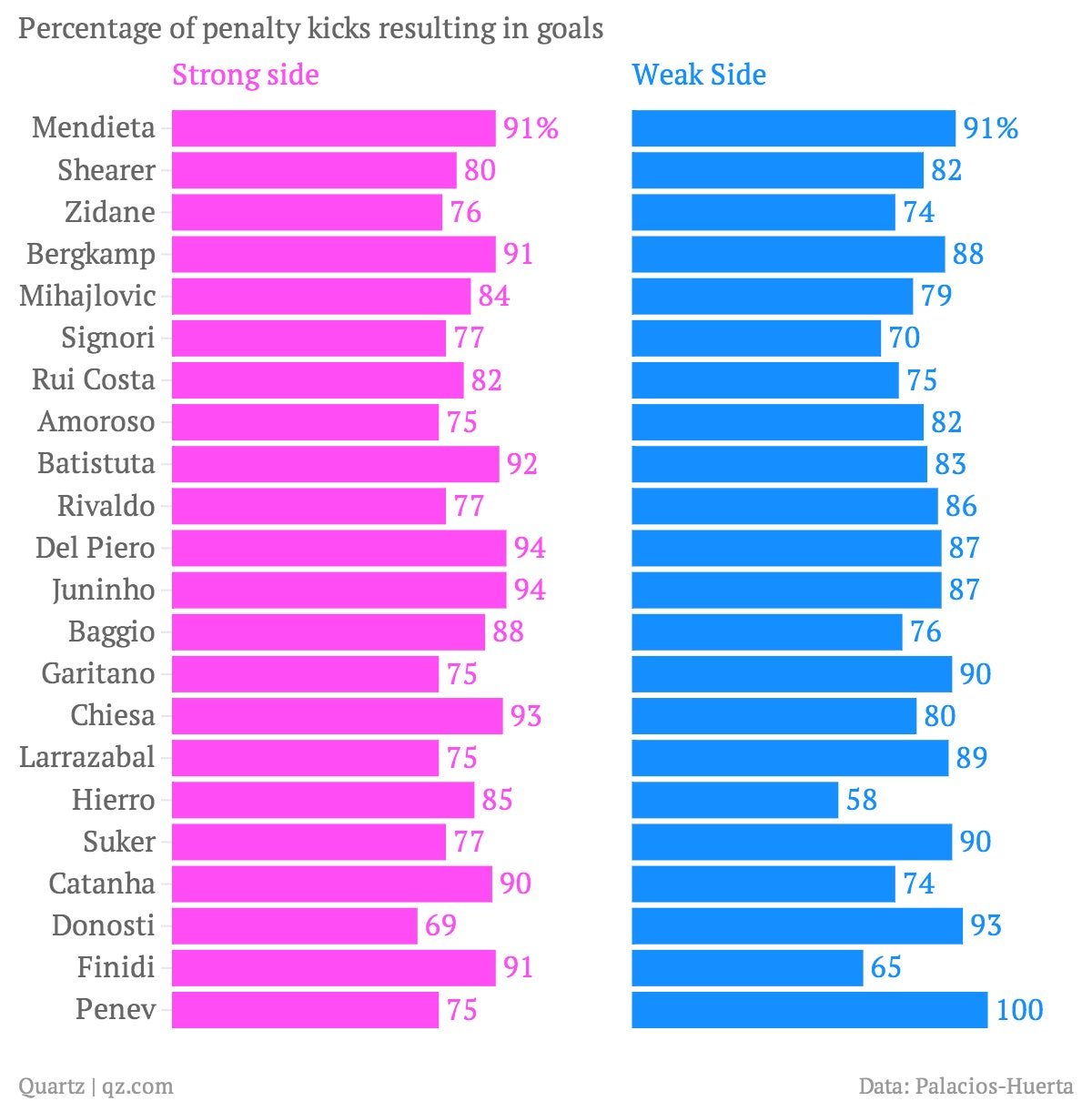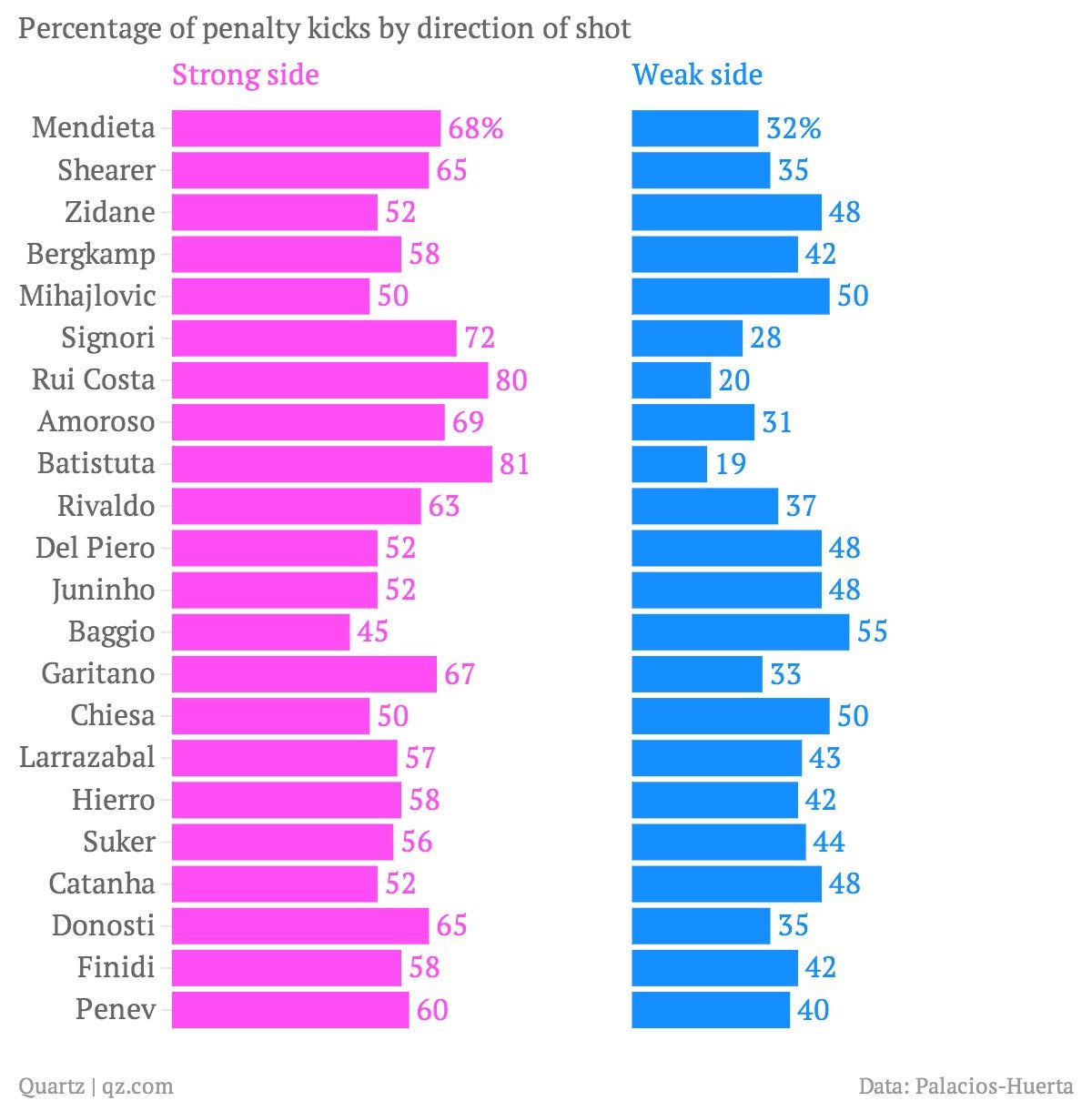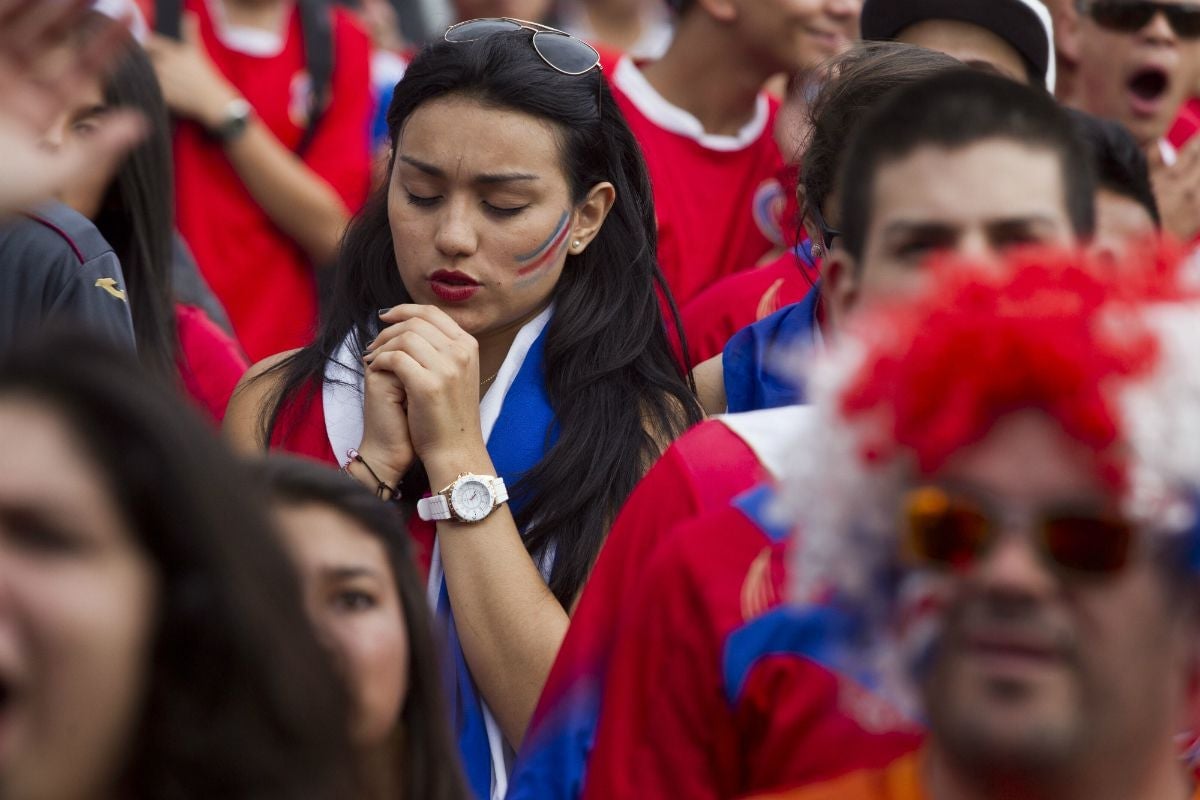The only good penalty kick strategy is not having a strategy
A penalty taker in soccer should always kick to their strong side, because that gives him or her an advantage, right? But wait, then the goalie would expect the ball to come from that direction, and move to stop the shot. So the kicker should go to the weak side? Wrong again.


A penalty taker in soccer should always kick to their strong side, because that gives him or her an advantage, right? But wait, then the goalie would expect the ball to come from that direction, and move to stop the shot. So the kicker should go to the weak side? Wrong again.
According to game theory—the study of how people make strategic decisions—the best strategy is to aim shots completely at random, a part of what’s known as the “mixed strategy.” The surprising thing is that, even in a world rife with eccentricity, superstition, and habit, top soccer strikers and goalies tend to behave exactly as the theory says they ought to.
What the evidence shows
A 2002 study (pdf) by Ignacio Palacios-Huerta, currently at the London School of Economics, put game theory to the test by analyzing thousands of penalty kicks taken in professional leagues. A penalty kick is a perfect game to test because, unlike in checkers—where there is an ideal move that can be made at any given juncture—a kick requires a randomized “mixed strategy.” That’s because there is no single strategic choice that will always work: shoot left enough and a goalie will be onto you, forcing you to change tactics.
But do soccer players actually act this way? “The results show that [players] act instinctively and intuitively as if they were programmed with great preciseness to correctly play this strategic game,” Palacios-Huerta says.
In a soccer penalty kick, the mixed strategy theory predicts that a striker is equally likely to score on both her weak and strong sides. And the data Palacios-Huerta collected support that prediction. Of the kicks he analyzed, 81.1% of those on the weak side went in, compared to 82.7% on the strong side—a statistically meaningless difference. (Palacios-Huerta counted shots to the center as equally difficult to those aimed the strong side, after interviewing players who said they considered them as such.)
The numbers are actually pretty close even for individual players; here are the figures for the (now a bit old) players Palacios-Huerta looked at:

Strikers do go to their strong side more often, but not by much. In aggregate, shots in that direction accounted for 60% of the total.

Game theory also predicts that shots will be ”serially independent,” meaning a given decision won’t affect those that follow. If penalty kick strategy is truly mixed, going left shouldn’t mean a kicker is any more likely to go right next time. This too is supported by the data. Palacios-Huerta’s findings “suggest that professional soccer players are indeed able to generate random sequences; they neither switch strategies too often nor too little.”
The same appears to be true even for small numbers of shots. Another study (pdf) of penalty kicks analyzed a different set of strikers, and found that “only three of the 26 kickers with exactly three penalty kicks always shoot in the same direction.”
Why randomness is key
The “mixed strategy” employed in penalty kicks means there is no single, correct course of action that leaves all participants with no regrets. This contrasts with “pure strategy,” where there is a single choice that is optimal for one or all players.
Let’s make mixed strategy clearer by comparing it to a classic example of pure strategy, the ”stag hunt.” It’s a thought experiment that goes like this: Two hunters are deciding which animal to catch for their day’s meat. They must choose either a stag or a hare, without knowing what the other has chosen. Stags are much bigger and provide four times more meat than a hare, but they can only be caught if both hunters decide to work together. A hare, on the other hand, can be caught easily by one hunter alone. Assuming the hunters want to maximize the amount of meat they get, which animal should they target?
It’s tempting to say that a hunter should go for the guaranteed meat of the hare. After all, how is she to know what the other hunter is thinking? But it is in both hunters’ interests to go after the stag. With four times the meat of a hare, they can then share the stag and still each have double what they would have caught by going alone. Basically, there is a right answer to this problem (for everyone except the stag).
Things look different for penalty kicks. The hunters are able to settle upon a strategy because they find mutual reward through cooperation. That’s not possible in a penalty kick, where one player’s success is necessarily the other’s failure.
Furthermore, for the hunters there is no downside to employing the same strategy (going after the stag) over and over. It is always the right choice. Not so in a penalty kick: Once a player becomes known for going left, she’d better start going right, and vice versa. So the best strategy for both strikers and goalies is to have no particular strategy at all.
When a game requires mixed strategy, the players should aim to be as inconsistent as possible. The data show that penalty kick strategies are indeed totally random. Thus top players and goalies are perfect implementers of game theoretical mixed strategy: They unwittingly reach an equilibrium in which going to the weak side works just as well as going to the strong side, and where one shot is not at all related to the next.
So the next time your team is taking a penalty kick, don’t fret about which direction the shot should go or why. Instead, you might employ the one penalty kick strategy that is still almost invariably used: prayer.
